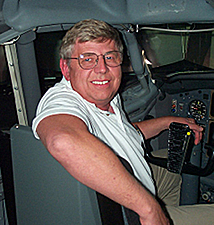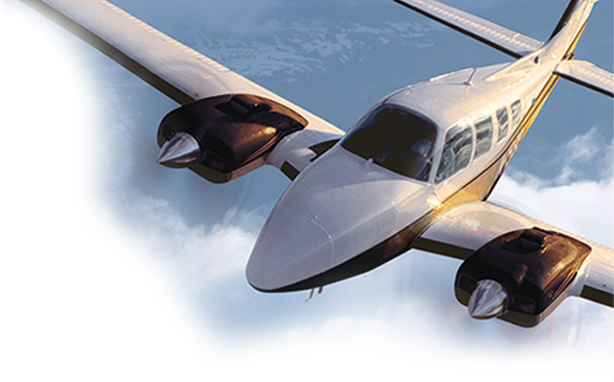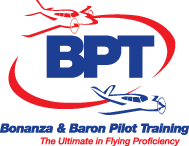The Pilots’ New Panel
by Michael J. “Mick” Kaufman

As pilots continue to show – and tell – me about the new avionics suite they have in their airplanes, I am reminded of the childhood story called “The Emperor’s New Clothes.” This short folk tale, written by Hans Christian Andersen and published in 1837, is about an emperor who was sold a magnificent set of clothing by two swindlers. The moral of this story is that we cannot let pride keep us from speaking up when we know the truth.
For those of you who have never read “The Emperor’s New Clothes,” this is how it applies to getting that dream panel in your airplane.
In short, pilots like to let the world know they are pilots: it is an accomplishment. I have the tendency to tell people I was the city mayor; it was an accomplishment, but I would think long and hard before doing it again.
A few pilots like to brag to other pilots telling them about what great pilots they are; the types of airplanes they fly; and now, the avionics equipment they have in their airplanes. The thing is, if that pilot spends $70,000-plus on a new panel and it does not work, or worse yet, they don’t like it once installed, most pilots will still brag about their new avionics rather than talking about the mistakes made.
This is the first of a two-part article, in which I will discuss the pros and cons of installing a new avionics a panel and what my last upgrade was like. In the next issue, I will cover what to look for in different equipment. Hopefully, that will help you decide whether you want to do the project, and if so, what works and what does not.
Please don’t get the wrong idea from the first paragraph. I am a geek and an amateur radio operator. While I love new technology, I try to be practical and always promote safety in flying.
In a previous column, I wrote about how I almost became a victim of controlled flight into terrain [CFIT] while trying to program a waypoint on a touch screen in heavy turbulence. I wanted to write this article to inform fellow pilots of what may be involved in a panel update by reviewing both the pros and cons involved.
An example of a “con” involved a Cessna 414 pilot from Wisconsin who decided to do a complete panel upgrade. He went to a reputable avionics shop in his local area and got a quote for what he decided to install. The quote was high, so he found another somewhat reputable shop in Georgia that was 10K less. He went with the low bid.
His airplane is sitting in that shop in Georgia all torn apart. Now, the question is whether to finish doing the upgrade or to call Wentworth Aircraft Salvage to pick up the airplane.
So how can things like that happen?
Once a shop opens the panel and sees what needs to be done, it may require way more labor and parts than expected to make things work properly. In this Cessna 414 example, we are dealing with pressure bulkheads.
Three years ago, with ADSB coming, it was apparent to me that it was time to do an upgrade to my panel, so I started thinking about what I would like to do in my Bonanza. My wife gave me an allowance of 5K to spend and we all know that would not go far. So, the following is what I did have in my panel (further below is what I have now):
S-tec 50 Autopilot with a yaw damper
2 King KX 175 Nav Coms, 1 with MAC Conversion
Apollo 618 Loran Navigator
King KR 87 ADF
King KT 76 Transponder
King KMA 24 H Audio Panel
Garmin 396 GPS with XM Weather
Century Slaved Compass System
JPI 700 Engine Analyzer with Fuel Computer
It was quite a challenge with only 5K to spend. I didn’t get everything I wanted, so I needed to compromise.
First was ADSB, and I found a derelict NavWorx ADS600B in- and out-box on eBay for $200. Seeing that it needed an approved data source to be compliant, I solved two issues by purchasing a Garmin GNS480 for $900.00, which included a WX10A Storm Scope that I did not install.
Next came a remote Garmin Transponder to match the Garmin 480 for $200 on eBay along with a DAC GPS steering module for $250. This was really all I needed, but there was the installation cost that needed to be included – and several $K remained in the budget.
That covered the ADSB traffic issue; however, I wanted to have weather on my
iPad displayed on Foreflight. From my experience, Sirius XM Weather was far superior to ADSB weather, so I chose a Garmin GDL-52 Weather Box. It connects via Bluetooth to Foreflight and provides an Attitude and Heading Reference System [AHRS] source for the Foreflight synthetic vision.
My friend, Randy Bailey, suggested adding a Garmin Aera 660 as the Garmin 396 will not interface with Foreflight. I now consider this the best Garmin device for the dollar on the market for around $700. I was incredibly lucky that the 660 uses the same panel space as my old Garmin 396: My installer was ready to kill me for making another change while the install process was in progress!
The Garmin Aera 660 was the key to making all the avionics devices work in harmony with each other. For that reason, I will dedicate an entire column to the Aera 660 in a future column.
My panel now has the following equipment in it and even though I am happy, I am still in the last century panel wise:
S-tec 50 Autopilot with a yaw damper
1 King KX 175 Nav Com with MAC Conversion
King KR 87 ADF
Garmin 480 (GPS Navigator & Com)
Garmin GDL-52 (ADSB & Sirius XM WX & Music) plus (AHARS)
King KMA 24 H Audio Panel
Garmin Aera 660 GPS (with XM Music Selector)
DAC (GPS Steering Module)
Century Slaved Compass System.
JPI 700 Engine Analyzer with Fuel Computer
NavWorx (ADSB in and out)
Garmin (Remote Transponder)
Global Star (Satellite phone interface)
There are some “cons” about what I did — and I want to mention them for those thinking about copying my budget panel install.
My biggest savings was my navigator, the Garmin 480, which I could not recommend to most pilots. Yes, I got it cheap, but I know the box well from flying with customers, and it is not Garmin user-friendly as it was designed by Apollo (UPS Technologies) and sold to Garmin. It was ahead of its time and had more capability than the Garmin 650 / 750 when they were first released with first generation firmware.
There is no support for the Garmin 480, should it need to be repaired by Garmin if it fails. If Jeppesen decides to discontinue data base support, it will take $2 and a Garmin 480 box to purchase a cup of coffee at Starbucks.
Even though all of the items I purchased on eBay worked, that was another chance I took. The pros go to the installer who is a close friend and has a PhD in aviation electronics; he went the extra mile in doing it right.
All the components and interfaces were hard-wired for reliability. The only exception was the iPad for Foreflight, which was connected via Bluetooth.
Yes, I got lucky as everything works perfectly as it is supposed to: simple and practical. Yes, there are several things I would have changed if the budget would have allowed, and I can do everything that the 70K panel will do with solid redundancy and no frills.
In my continuation of this subject in the next issue, I will share my opinion of some of the newer avionics on the market, along with pros and cons from my customers and pilot friends. That way, you won’t need to decide if I should finish my dream panel or call Wentworth Aircraft Salvage once the project is underway.
‘Til next issue of the Captain’s Corner, Fly Safe!
Mick



